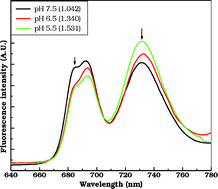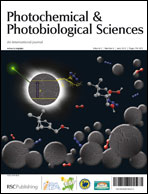Our observation that the F735/F685 ratio at 77 K increased when the lumenal pH decreased led us to investigate the role of pH in explaining the mechanism of state transitions in spinach (Spinacea oleracea L.) thylakoid membranes. As the lumenal pH was changed from pH 7.5 to 5.5, the quantum yield of PS II decreased, while that of PS I increased. In the presence of an uncoupler, NH4Cl, which sequesters protons, a reversal of the effects observed at pH 5.5 were noticed. The thylakoid membranes treated with NaF at pH 5.5, when suspended in a buffer of pH 7.5, showed enhanced PS II fluorescence and a decreased PS I fluorescence, suggesting migration of LHC II back to PS II from PS I. The results presented here suggest for the first time that the lumenal pH of thylakoid membranes regulates the migration of antenna, and hence the energy distribution, between the two photosystems, i.e. a low lumenal pH (pH 5.5) favors antenna migration from PS II to PS I. At pH 7.5, the deprotonation of LHC II antenna attached to PS I leads to back migration of LHC II to PS II.

You have access to this article
 Please wait while we load your content...
Something went wrong. Try again?
Please wait while we load your content...
Something went wrong. Try again?


 Please wait while we load your content...
Please wait while we load your content...